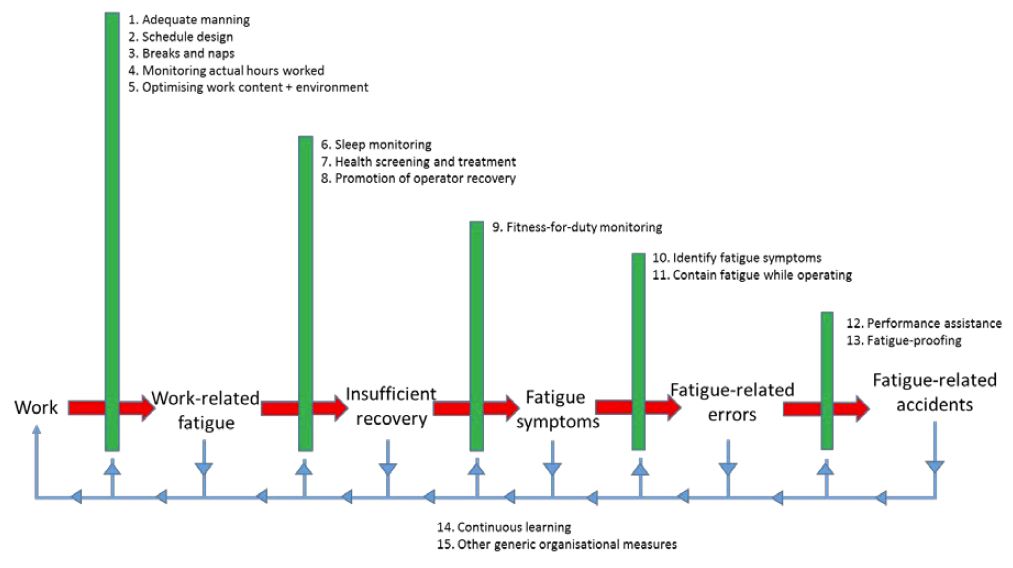 Increased safety in land- and sea-based transport can be achieved if more employers manage the risks related to operator fatigue.
Increased safety in land- and sea-based transport can be achieved if more employers manage the risks related to operator fatigue.
An effective way to do this is to select and apply a number of countermeasures to manage fatigue along a risk trajectory, beginning with the nature and timing of work and ending with the manifestation of fatigue in incidents and poor health outcomes.
Work-related fatigue is a threat to safe transport, but little has been done to structure the complex array of possible mitigating measures that risk managers can consider.
To improve the situation, researchers at TØI have reviewed the literature to identify and explain 15 countermeasures types, which we then group into five different hazard levels along a “fatigue risk trajectory”.
The 15 types of countermeasure are: adequate manning; schedule design; breaks and naps; monitoring of actual hours worked; optimisation of work quality; sleep monitoring; health screening and treatment; promotion of recovery from work; recovery monitoring; identification of fatigue symptoms; containment of fatigue while operating; performance assistance; and fatigue-proofing.
By grouping these countermeasures according to the location on the risk trajectory of the fatigue hazard addressed, a model of fatigue mitigation is obtained for use in fatigue risk analysis and countermeasure selection by transport risk managers.

Countermeasure groups for fatigue in human transport operators arranged along a fatigue risk trajectory. After an initial risk analysis, barriers (in green) should be put in place to minimise the chance that work causes fatigue-related accidents. The manifestation of fatigue should be monitored at each step of the trajectory, and used to evolve and evaluate the barriers preceding that step, as indicated by the blue arrows.
The resulting model helps to structure the choice of countermeasures that together form barriers to fatigue development.
Managers would be further assisted by knowledge on the effectiveness of interventions using countermeasures, on business drivers for fatigue risk management, and on measures to encourage other transport chain actors to consider fatigue. The use of countermeasures in fatigue risk management has the potential to improve the wellbeing and safety of any employee driving for work.
Report
Countermeasures for use in fatigue risk management
Author: Ross Owen Phillips
Link to full report in English.
 Contact:
Contact:
Ross Phillips, Chief Research Psychologist
rph@toi.no
TØI, Norway






Follow us: